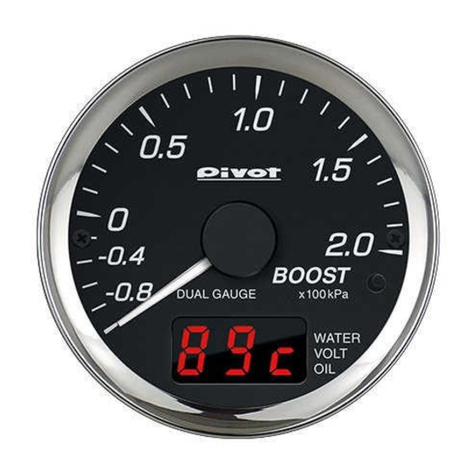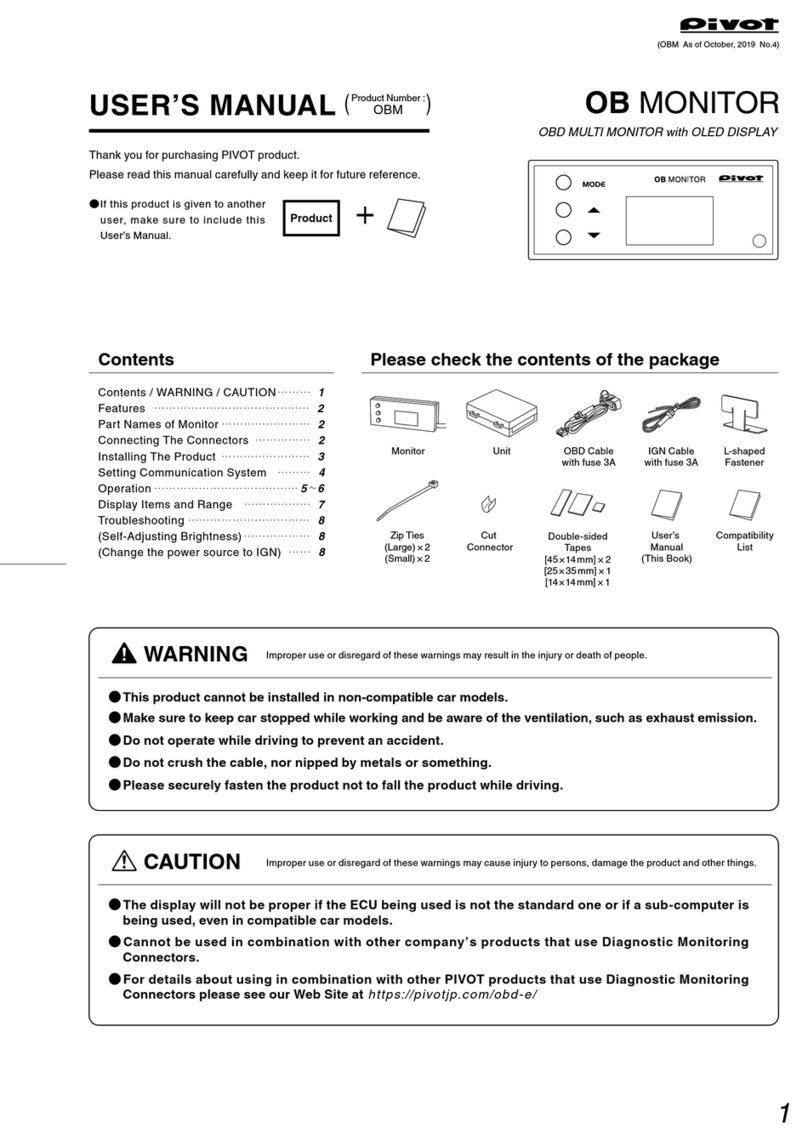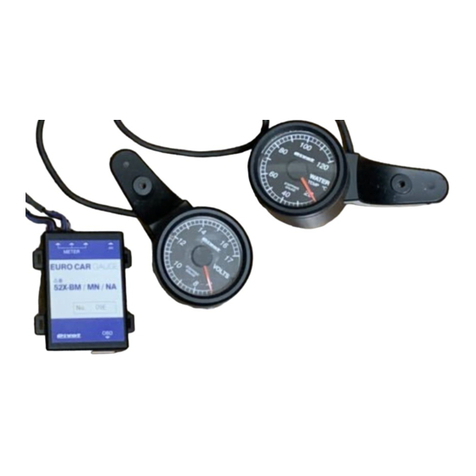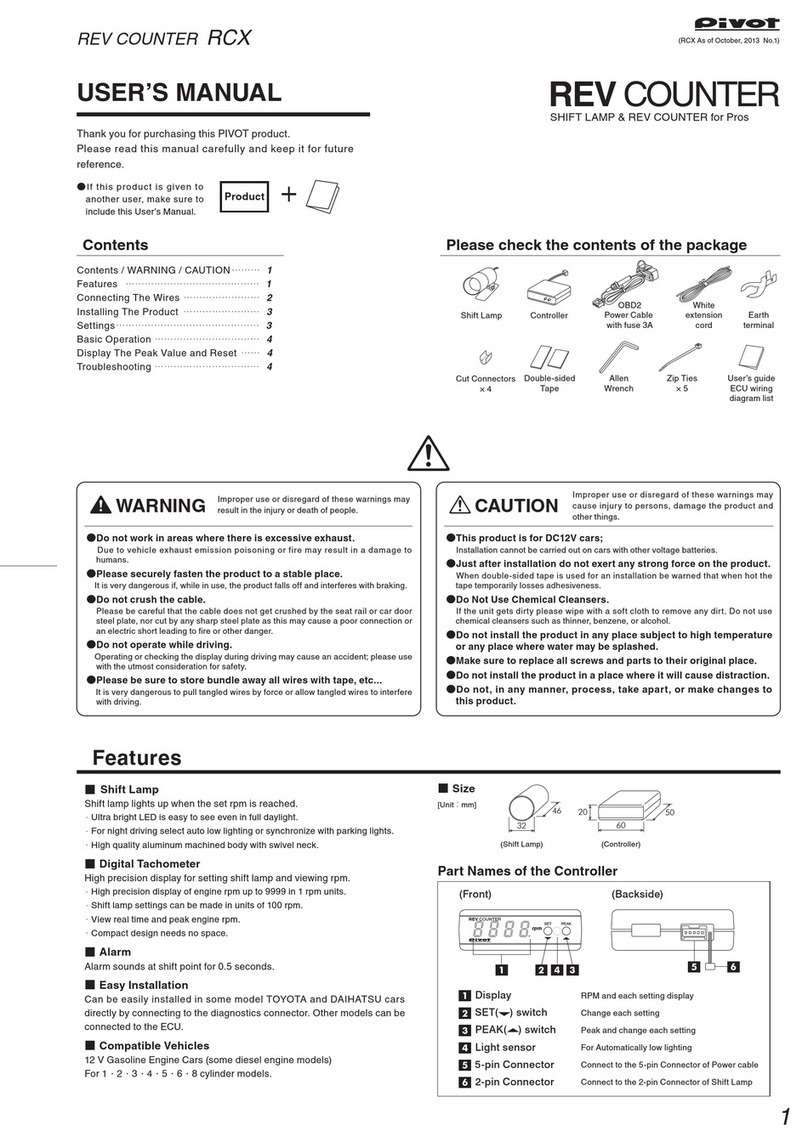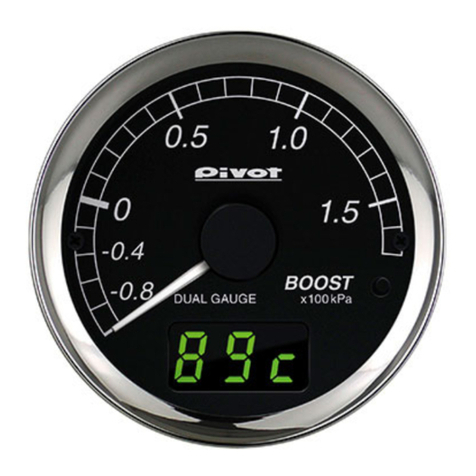
NOTE: If you exceed 249 feet, or 76 meters, three dashes (- - -)
replace the depth display indicating you are out of range. Triple
dashes will also replace the max depth dive in the log display.
Alternate Dive Mode
Alternate Dive Mode (figure 6) replaces dive mode every 15
seconds. It displays water temperature and maximum depth for two
seconds before reverting to normal Dive Mode. Alternate Dive Mode
is easy to recognize because the bottom time display disappears.
Dive Log Mode
Dive Log Mode (figure 7) is accessible once you are back on the
surface. To display the dive log mode press the activation button.
The dive log will display the following:
1. Dive number
2. Total bottom time
3. Maximum depth
4. Maximum ascent rate
This information will be displayed for 5 seconds followed by the
alternate dive log screen which will display your dive number and
surface interval (prior to the dive). You may freeze the dive log
display at any time by holding down the activation button. Once the
button is released you can go to the next logged dive. Your Pivot
DS3 holds up to 9 dives in memory indefinitely until your next dive
after 12 hours, or until the battery is changed.
NOTE: When you enter the Dive Log Mode, the DS3 displays the
most recent dive first. If you hold down the button for eight seconds
while this dive is being displayed you will see factory calibration codes. The calibration
codes will scroll E8, E7, E6, etc., down to E1. After the calibration codes finish scrolling,
the Pivot DS3 will return to Surface Mode. These calibration codes are for factory use only.
Flying After Diving
Since the surface interval timer automatically deactivates 12 hours after a dive, you can
use this as an indication of when to board a commercial airliner. The Divers Alert Network
(DAN) recommends a minimum surface interval of 12 hours. If you plan to make daily,
multiple dives for several days, or make dives that require decompression stops, wait for an
extended surface interval beyond 12 hours before flight.
Using the Pivot Console Boot
The Pivot® console boot is designed to allow you to constantly
monitor crucial dive information while either reading the pressure
gauge, or navigating with a compass. With other gauge consoles that
have the compass alone on the backside of the boot, you have to
keep flipping the gauge back and forth to see the dive information
while navigating with the compass.
To have the compass and gauge visible at the same time, simply
rotate the bottom section of the boot, in either direction, until it
“clicks” into place. The pictures on the front cover of this manual
show how the lower section of the boot swivels.
After you have reached your underwater destination, rotate the bottom
section so the pressure gauge faces up.
Figure 6
Figure 7
Figure 8






